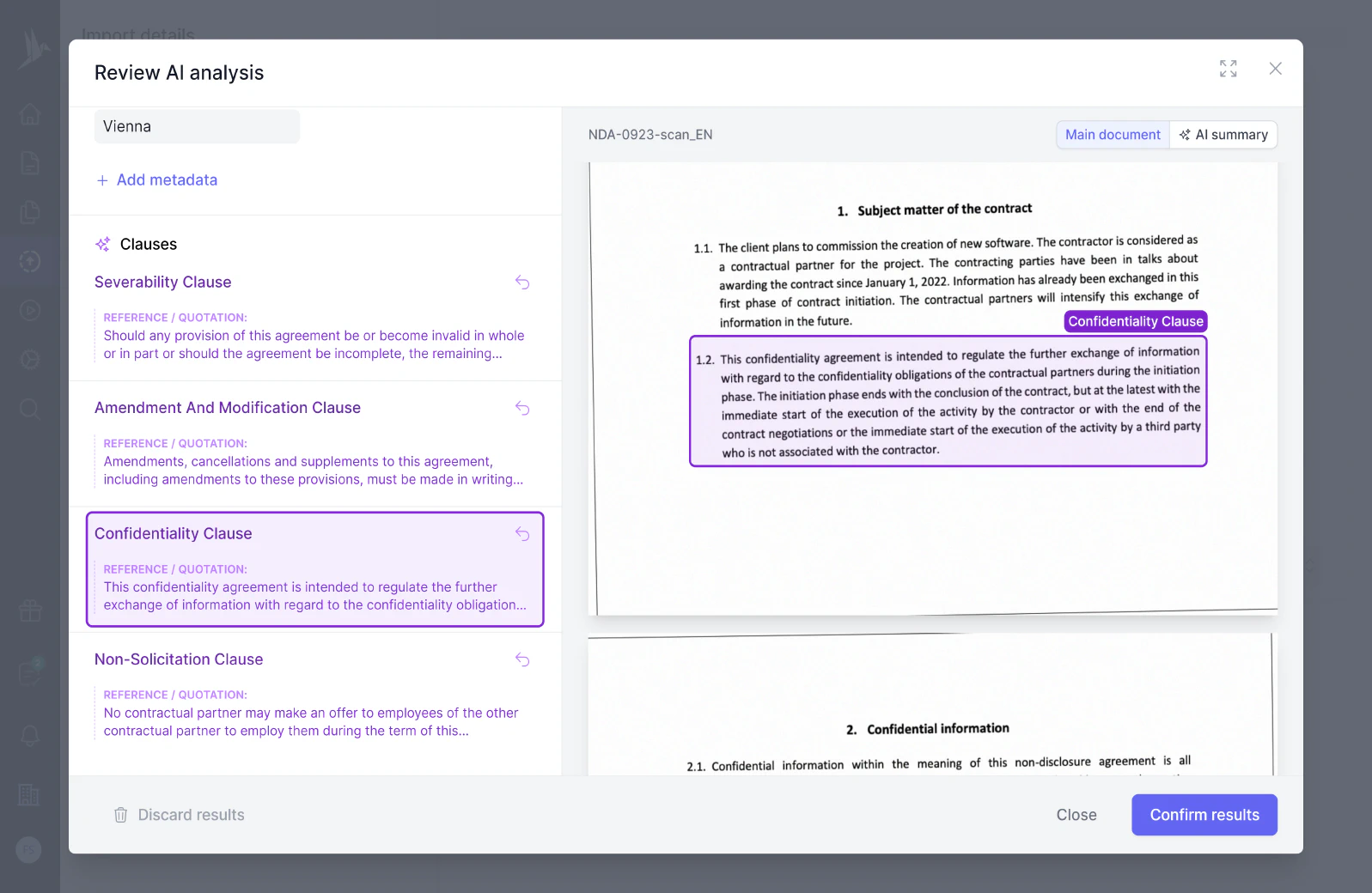The "Use of Logo" clause specifies the conditions under which one party is permitted to use the logo or trademark of the other party. It outlines the permissible contexts for logo usage, any approval requirements, and restrictions to ensure the brand's integrity and consistency are maintained.
What is “Use of Logo”?
When we talk about the “Use of logo,” we’re referring to the permission someone gives to another person or company to use their logo. But it’s not as simple as just slapping the logo on anything — there are often rules and legal restrictions to make sure the logo is used in a way that fits with the brand’s image. In many cases, an ownership clause for digital logo is part of the agreement, making it clear who actually owns the logo while giving others the right to use it.
When Should I Ask for Permission to Use a Logo?
You’ll need permission to use someone else’s logo anytime you want to include it in your work. This might come up in situations like:
- Marketing: Showcasing a partner’s logo in a campaign.
- Sponsorship: Featuring sponsor logos at an event or on your marketing materials.
- Partnerships: Including a partner’s logo on your website or in a presentation.
- Packaging: Putting another brand’s logo on your product’s packaging.
In any of these cases, it’s important to include an ownership clause for digital logo to avoid confusion about who actually owns the logo.
Common Pitfalls with “Use of Logo” Clauses
Using another company’s logo can sometimes lead to headaches if things aren’t handled correctly. Some of the most common problems are:
- Using the Logo in the Wrong Context: If you don’t fully understand where and how the logo can be used, you might accidentally misuse it and face legal issues.
- Ignoring Brand Guidelines: Logos usually come with strict rules about things like colors and sizing. If you break those rules, you could be in breach of contract.
- Ownership Confusion: Failing to include an ownership clause for digital logo can lead to disputes, especially if the partnership goes on for a long time or involves a lot of co-marketing.
Examples of Logo Misuse
To see how these issues can play out, here are a few common examples:
- Unauthorized Use: Using a partner’s logo without getting permission first.
- Altering the Logo: Changing the logo’s colors or layout, which breaks the brand’s guidelines.
- Out-of-Context Use: Displaying the logo in a way that implies a partnership or endorsement when there isn’t one.
Misusing a logo not only leads to potential legal trouble, but it also damages trust between partners. That’s why having a clear “Use of logo” clause helps keep things smooth.
Brand Guidelines: The Rules for Using Logos
When using a logo, it’s essential to follow the brand’s guidelines to the letter. These rules usually cover:
- Clear Space: How much empty space needs to be around the logo to keep it legible.
- Color Options: When to use the full-color version vs. black-and-white.
- Backgrounds: What types of backgrounds are allowed so the logo is easy to see.
- Size and Scaling: Minimum and maximum sizes for the logo, ensuring it’s always readable.
- Incorrect Usage: What not to do with the logo — things like changing the colors or stretching it out.
Sticking to these guidelines helps maintain the logo’s consistency and protects the brand’s identity.
Writing a Great “Use of Logo” Clause
When creating a “Use of logo” clause, here are some best practices to follow:
- Approved Use Cases: Be clear about where the logo can appear, like on websites or event banners.
- Visual Requirements: Specify the details for keeping the logo looking right — from color options to minimum sizes.
- Restrictions: Include what can’t be done with the logo, like altering it or using it in certain contexts.
- Approval Process: Outline how to get final approval for the logo’s use before it goes public.
- Ownership Rights: Always include an ownership clause for digital logo to make sure it’s clear who owns the logo, even when usage rights are granted.
- Term and Termination: Define how long the logo can be used and under what conditions the permission can end.
These details help everyone involved understand how the logo should be used, reducing the risk of mistakes.
Why an Ownership Clause for Digital Logo is So Important
An ownership clause for digital logo is a critical part of any contract involving logo use. It clears up any confusion about who owns the logo, even when other parties are allowed to use it. Here’s why this matters:
- Clear Ownership: It ensures that everyone knows who actually owns the logo.
- Misuse Prevention: The original owner retains control over the logo’s use, which helps prevent it from being altered or used inappropriately.
- Long-Term Control: When partnerships end, the usage rights can be pulled back, but ownership stays with the original company.
- Legal Protection: A clear ownership clause provides a solid legal foundation if any disputes arise over logo use.
In short, having an ownership clause for digital logo keeps ownership with the original creator, even when others can use the logo.
Steps to Get Permission to Use a Logo
If you need to use someone else’s logo, follow these steps to make sure everything goes smoothly:
- Identify the Logo Owner: Find out who owns the rights to the logo.
- Request Permission: Submit a formal request that outlines how and where you want to use the logo.
- Negotiate Terms: If the owner has conditions, discuss them and make sure they work for your needs.
- Get Written Agreement: Put everything in writing, including a “Use of logo” clause and an ownership clause for digital logo.
- Obtain Final Approval: Before going live, get the logo owner’s sign-off on the final design.
By following these steps, you can avoid potential conflicts and ensure the logo is used correctly.
Writing the Term “Use of Logo”
When writing about “Use of logo,” always make sure to be clear about what’s allowed and what isn’t. This might be found in brand guidelines, license agreements, or other collateral materials.
Contracts That Usually Contain a “Use of Logo” Clause
You’ll find a “Use of logo” clause in contracts like:
- Partnership agreements: Outlines the terms for branding and co-marketing efforts.
- Sponsorship agreements: Defines how and where sponsor logos can be used.
- Licensing agreements: Grants permissions to use trademarks, including logos, under specific conditions, and often includes an ownership clause for digital logo to clarify ownership.
- Non-disclosure agreements (NDAs): May include logo use if relevant to the disclosure terms.
Example: “The Partner agrees to use the Sponsor’s logo in all marketing materials related to the Event, adhering strictly to the Sponsor’s brand guidelines as provided. Ownership of the logo remains with the Sponsor.”
Example: “The Company grants a non-exclusive license to the Licensee to use its logo on the Licensee’s product packaging, subject to the terms laid out in the attached brand guidelines. Ownership of the digital logo remains solely with the Company.”
Always ensure these contracts include an ownership clause for digital logo to protect the logo’s original owner.
By following these tips, you’ll be able to use logos responsibly, respecting the terms of an ownership clause for digital logo while maintaining brand integrity.



